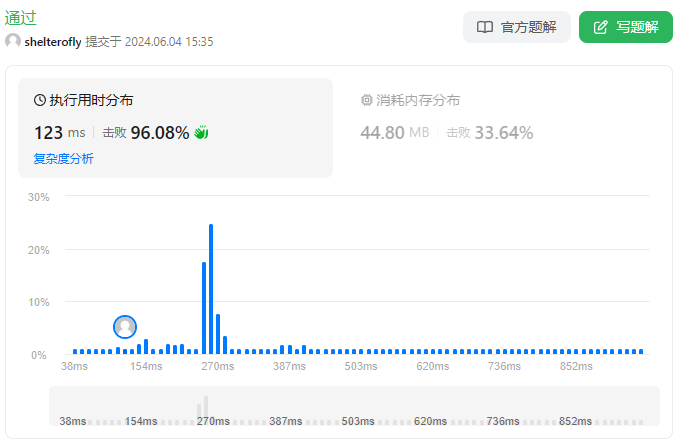目标
给定数组 people 。people[i]表示第 i 个人的体重 ,船的数量不限,每艘船可以承载的最大重量为 limit。
每艘船最多可同时载两人,但条件是这些人的重量之和最多为 limit。
返回 承载所有人所需的最小船数 。
示例 1:
输入:people = [1,2], limit = 3
输出:1
解释:1 艘船载 (1, 2)示例 2:
输入:people = [3,2,2,1], limit = 3
输出:3
解释:3 艘船分别载 (1, 2), (2) 和 (3)示例 3:
输入:people = [3,5,3,4], limit = 5
输出:4
解释:4 艘船分别载 (3), (3), (4), (5)说明:
- 1 <= people.length <= 5 * 10^4
- 1 <= people[i] <= limit <= 3 * 10^4
思路
给定一个数组,数组元素是待救援人员的体重,每条救生艇最多载两人且体重不超过限制,问最少需要多少救生艇。
尽可能多地让两人乘一艇,将体重轻的与重的搭配,如果都是轻的则造成运力浪费。
因此先按体重从小到大排序,然后使用双指针将重的与轻的搭配即可。
代码
/**
* @date 2024-06-10 21:18
*/
public class NumRescueBoats881 {
public int numRescueBoats(int[] people, int limit) {
int n = people.length;
Arrays.sort(people);
int end = Arrays.binarySearch(people, limit);
if (end < 0) {
end = -end - 1;
}
// [end,n) 下标小于end的元素均比limit小,end 为0则可直接返回n
int res = n - end;
int start = 0;
while (start < end) {
// 如果start == end -1 即仅剩start一个元素 不再重复累加
// start < end 防止end - 1为负即end==0
// 由于取开区间,不包括end,因此从end-1开始
while (start < end - 1 && people[start] + people[end - 1] > limit) {
end--;
res++;
}
start++;
end--;
res++;
}
return res;
}
}
性能











